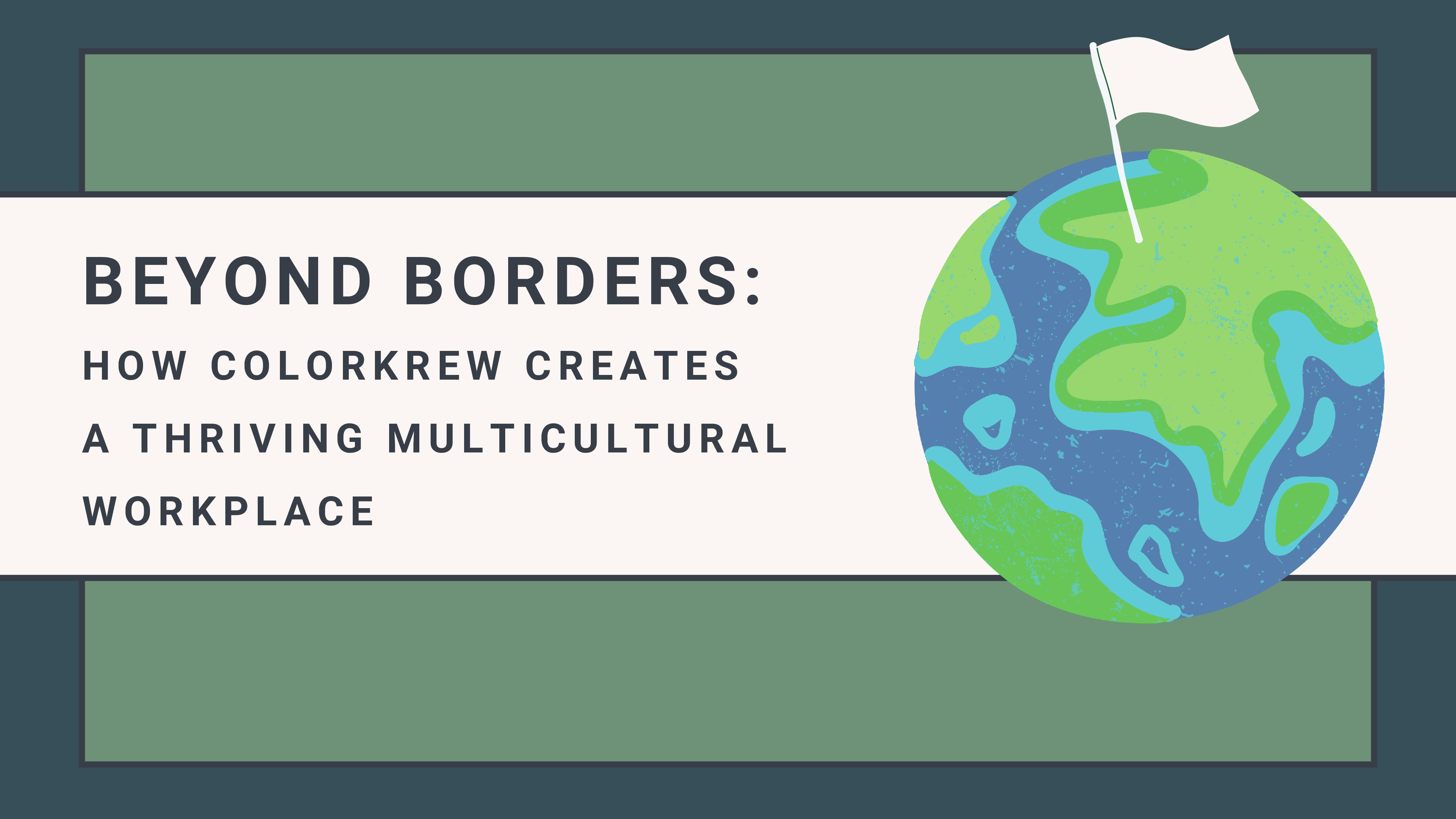Beyond Borders: How Colorkrew Creates a Thriving Multicultural Workplace
In today’s increasingly globalized world, companies that successfully build bridges across cultures often gain a competitive edge. At Colorkrew, cultural diversity isn’t just a checkbox on an HR form—it’s woven into the very fabric of our organizational DNA. As a Taiwanese member who spent two years in Tokyo before joining the company, I’ve had a front-row seat to what makes this multicultural environment so special.
A Global Tapestry in the Heart of Japan
Before joining Colorkrew, I was enrolled in the International MBA programm at Waseda from 2022~ Autumn 2024. When I started job hunting around year-end of 2023, the goal was to look for a company where I can immerse myself in an international setting while having the chance to work closely with Japanese members. After rounds of research and trials, I found the opportunity to join Colorkrew as a 新卒 (new graduate programme) and was luckily offered with a career path to become Product Manager for one of the groupware products.
What surprises many newcomers—myself included—is how seamlessly the international and Japanese team members interact at Colorkrew. In many Japanese companies, there can be an invisible but palpable divide between Japanese staff and foreign employees. Cultural differences in communication styles, work expectations, and social norms often create unintentional barriers. At Colorkrew, however, these potential obstacles have been transformed into opportunities for connection and growth. Team members from across Asia, Europe, the Americas, and beyond collaborate on projects, each bringing their unique perspectives to the table. The question that naturally arises is: how? How does a company create an environment where cultural differences become strengths rather than challenges?
Intentional Integration: More Than Just Policy
Many organizations proudly announce their commitment to diversity and inclusion, but fewer successfully implement practices that make these values a living reality. Colorkrew’s approach is refreshingly practical and human-centered. When I first joined, I expected the usual onboarding process and perhaps some perfunctory welcome events. Instead, I found myself immediately integrated into daily rituals that naturally foster connection.
The company has established what we call the “Go to Lunch” and “Go to Drink” system—a simple but effective approach to ensuring team members mix across departmental and cultural lines. Rather than allowing people to default to having lunch with the same colleagues day after day (typically those who share their native language or department), Colorkrew encourages spontaneous lunch groups that bring together diverse team members. Sometimes this happens through casual invitations within the team; other times, sometimes there might be a cross-functional meal which provide a chance for members to mingle with each other.
The “Go to Drink” component extends this philosophy to after-work socializing. In Japanese business culture, nomikai (drinking parties) are a common way to build relationships outside the formality of the office. Colorkrew has adapted this tradition to be inclusive of all team members, including those who don’t drink alcohol or come from cultures where after-work socializing isn’t common. The emphasis is on connection, not consumption.

Joyful Studio: Where Work Meets Play
Perhaps the most innovative aspect of Colorkrew’s approach to building their multicultural community is the dedicated space we call “Joyful Studio.” This multipurpose area transforms from a collaborative workspace during the day to an event venue after hours. Sometimes the company also scheduleactivities designed to bring team members together in a relaxed setting, allowing connections to form naturally through shared experiences.
As a new-comer, I was involved in the planning for a company party on April 23rd, which offered a perfect example of how these events strengthen our international team. After work, we gathered at Joyful Studio for a game of GeoGuessr—an online game that drops players at random locations around the world via Google Street View where players figure out where you are based only on visual clues in the environment. What makes GeoGuessr particularly apt for a multinational company is how it leverages diverse knowledge and perspectives. Therefore, having team members from different countries becomes a tremendous advantage.
We played in teams that were deliberately mixed, pairing people who rarely collaborate during regular work hours. The initial awkwardness quickly gave way to animated discussions and collaborative problem-solving. Our team—comprising members from Vietnam, Japan, the United States, and Japan—started chaotically, with everyone talking over each other. But within minutes, we had established an ad-hoc system: based on the setting for each round, some member became our geography specialist, some members focused on identifying language clues in signage, while other members looked for indicators in architecture and surroundings.
The Bigger Picture: Why This Matters
What might seem like simple fun and games actually serves a profound purpose in building Colorkrew’s organizational culture. These shared experiences create what sociologists call “collective effervescence”—that magical feeling when a group of individuals becomes a cohesive unit through shared activity and emotion.
The benefits extend far beyond a pleasant evening. Research consistently shows that teams with strong social bonds demonstrate higher levels of trust, more effective communication, and greater resilience when facing challenges. At Colorkrew, these intentionally designed interactions help break down the barriers that so often exist in multicultural workplaces.
For me personally, these experiences have accelerated my integration into the company in ways that would have been impossible through formal work interactions alone. Laughing together over our hilariously wrong guesses about whether we were looking at Kyushu or Tohoku created connections that make everyday collaboration smoother and more enjoyable.

Building Tomorrow’s Workplace Today
As companies around the world grapple with how to create truly inclusive multicultural environments, Colorkrew’s approach offers valuable lessons. Rather than treating cultural diversity as a challenge to be managed through policies and training sessions, the company created organic opportunities for meaningful connection.
The company understands that truly bridging cultural divides requires more than goodwill—it demands intentional structures that encourage interaction across differences. Whether through the informal lunch system or organized activities at Joyful Studio, these practices have created a workplace where diversity becomes a tangible asset rather than just an aspirational value.
For professionals considering international careers, particularly in countries with strong cultural identities like Japan, finding organizations with this level of thoughtful integration can make all the difference between feeling like a perpetual outsider and becoming part of a genuine community. What’s more, the company even offers Japanese learning support for foreign members who are eager to blend in (see Japanese Language Learning Programs at Colorkrew)
As we continue to navigate our increasingly interconnected world, companies like Colorkrew demonstrate that with the right approach, multicultural workplaces can become spaces of extraordinary creativity, connection, and joy. The global tapestry we’ve woven doesn’t just make work more pleasant—it makes it more innovative, resilient, and ultimately more successful.

